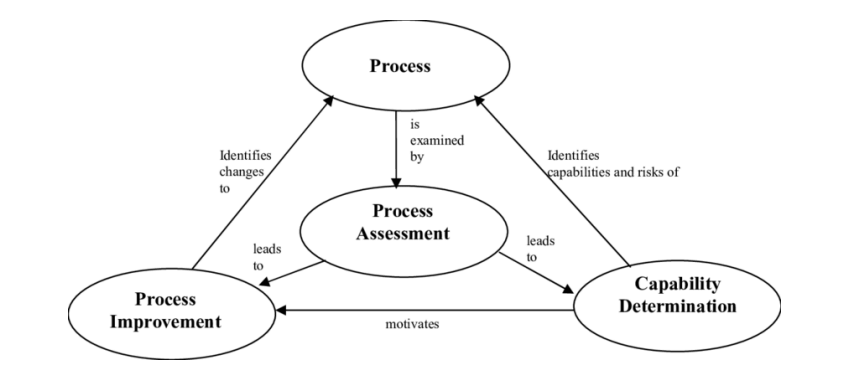- Introduction to Software Engineering
- The Evolving Role Of Software
- Changing Nature Of Software
- Software Myths
- A Generic View of Process
- Software Engineering- A Layered Technology
- A Process Framework
- The capability maturity model integration (CMMI)
- Process Patterns
- Process Assessment
- Personal And Team Process Models
- Process Models
- The Waterfall Model
- Incremental Process Models
- Evolutionary Process Models
- The Unified Process Model
Process assessment
The existence of a software process does not guarantee that the software will be delivered on time, that it will meet the customer’s needs, or that it will demonstrate the long-term quality characteristics required. Therefore, the process itself must be assessed to ensure it satisfies essential criteria for successful software engineering.
Several approaches to software process assessment have been developed over the past few decades.
SCAMPI (Standard CMMI Assessment Method for Process Improvement)
Provides a five-step process assessment model.
The five steps are:
Initiating
Diagnosing
Establishing
Acting
Learning
Uses the SEI CMMI as the basis for assessment.
CBA IPI (CMM-Based Appraisal for Internal Process Improvement)
A diagnostic technique for assessing the relative maturity of a software organization.
Uses the SEI CMM as the basis for evaluation.
SPICE (Software Process Improvement and Capability Determination)
Defined by ISO/IEC 15504 standard.
Provides a set of requirements for software process assessments.
The main goal is to help organizations objectively evaluate the effectiveness of their software process.
ISO 9001:2000 for Software
A generic standard applicable to any organization aiming to improve quality.
Directly relevant to software organizations and companies.
Focuses on improving overall quality of products, systems, or services.
